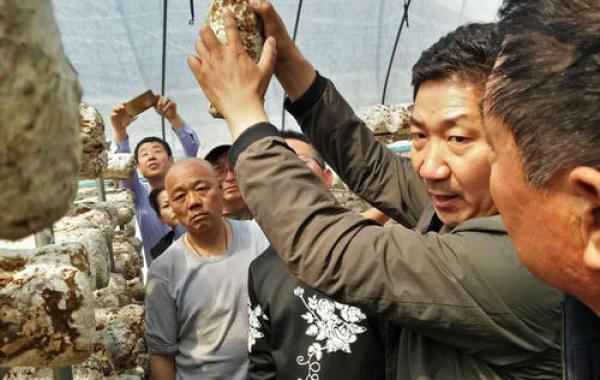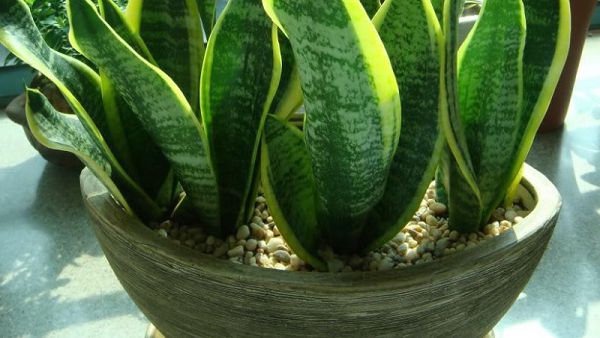Which edible fungi are good to cultivate in summer?

Which edible fungi are cultivated well in summer.
High temperature in summer often restricts the cultivation of many edible fungi varieties. How to select suitable high-temperature edible fungi varieties in summer and obtain high efficiency by using edible fungi in off-season is a problem concerned by many mushroom farmers. The author introduces several edible fungi suitable for summer cultivation based on practical experience.
Agaricus tetrasporus, also known as large fat mushroom, is a medium-temperature edible mushroom. The suitable temperature for hypha growth was 20℃~34℃, the optimum temperature was 25℃~27℃, the suitable temperature for fruit body growth was 27℃~29℃, higher than 30℃ or lower than 26℃ was unfavorable for fruiting. According to the suitable temperature range of this variety, the most suitable cultivation mode is sowing in summer and fruiting in early autumn. It can not only cultivate hyphae by using its high temperature resistance, but also produce a large number of mushrooms in the off-season of edible fungi sales in early autumn, fill the market vacancy and improve production efficiency.
The cultivation management of Agaricus tetrasporus is basically the same as that of Agaricus bisporus. The raw materials are mainly wheat straw, cattle and pig manure. Indoor bedstead cultivation and outdoor greenhouse cultivation can be used. Because its fruiting period is relatively short, generally only 3~4 fruiting can be harvested, so the bed culture material should not be too thick, about 12 cm is appropriate. Temperature regulation and water management in fruiting stage are very important, which are the most important to obtain high quality and high yield. As long as the technical measures of each production link are in place, the fresh mushroom can generally produce 6.5~7.5 kg per square meter and the income is 50~60 yuan. It is a reliable variety for mushroom farmers to increase their income by skillfully utilizing the off-season sales of edible mushrooms.
Volvariella volvacea is a kind of high temperature edible fungus, which is sensitive to temperature during its growth and development. In order to make Volvariella volvacea grow normally after sowing, it should be cultivated when the daily average temperature is stable above 23℃. Generally cultivated from early June to late August, it is beneficial to the growth of hyphae and the development of fruiting body. Volvariella volvacea can be cultivated indoors and outdoors, but outdoor cultivation is more advantageous. In outdoor cultivation, should choose fertile soil, loose, breathable, irrigation and drainage convenient farmland, the previous crop is best rape, watermelon. Weeds should be removed before cultivation, and furrows should be made to ensure drainage in case of flood and irrigation in case of drought.
No matter what kind of raw materials are selected for cultivation of straw mushroom, the raw materials should be exposed to the sun for 2~3 days before production to ensure that the raw materials are dry and free of mildew. The newly harvested straw must be thoroughly dried or it will rot easily. 5% lime water is used to pre-wet the material before sowing, so that the pH value is above 12, and then the compost is fermented for 4~5 days, and the moisture content of the culture medium is maintained at 65%~70%.
It is very important to select strains in production. The yield and quality of volvariella volvacea can be improved obviously by selecting high-quality and high-yield strains. V23 and V238 are ideal. Appropriate increase in seeding rate can accelerate mycelium growth and inhibit the occurrence of miscellaneous bacteria.
The practice proved that it was difficult to obtain high yield of volvariella volvacea by traditional heap cultivation, bed cultivation and bed cultivation because the temperature and humidity could not meet the requirements. The yield of Volvariella volvacea could be increased obviously by using the "two-stage cultivation method" of planting fungi in bags and then removing bags to cover soil in plastic arch shed or vegetable greenhouse.
The cultivation of straw mushroom is in high temperature season, so special attention should be paid to the relationship between temperature and humidity in management. Cooling, humidification, ventilation and shading should be coordinated to avoid death of straw mushroom due to improper treatment. When covering the soil, the bacteria bags should be laid flat, the distance between the bags should be 5~10 cm, the gap should be filled, and the surface soil thickness should be 1.5~2 cm. After covering the soil, sufficient water should be poured once, so that the hyphae can make full use of the soil moisture. In water management, it is forbidden to replenish water when the fruiting body is formed; it is forbidden to directly supplement tap water or underground well water, so as not to cause large temperature difference and cause dead mushrooms in batches.
Abalone mushroom is a kind of rare edible mushroom with medium and high temperature. The fruiting period is in the off-season of edible mushroom sales. In addition, the variety has thick meat and good transportation resistance. It has unique abalone flavor and excellent taste, so the market price is high.
From March to July, cotton shell, corn core, sawdust and wheat straw were selected as raw materials to cultivate abalone mushroom by clinker bag cultivation. Generally, 4~5 crops of mushroom could be harvested, and the biotransformation rate could reach 90%. The feed was 1000 kg, and the fresh mushroom could be produced 900 kg in 3 months. It was a reliable way for mushroom farmers to increase their income by using edible fungi in off-season.
High temperature Pleurotus ostreatus can produce mushrooms normally at 15℃~36℃, which is called high temperature type Pleurotus ostreatus, and its varieties include Gaoping No.1, Three Gorges No.13, Peach Blossom Pleurotus ostreatus, Delicious Red Pleurotus ostreatus, etc. After May every year, the supply of fresh mushrooms on the market will be less and less, especially from June to August, except for a small amount of straw mushrooms and high-temperature mushroom noodles, other edible mushroom varieties are rare, which provides a very favorable market space for producers of high-temperature mushroom. In high temperature season, Pleurotus ostreatus cultivation has short production cycle, large market demand and high price, which can not only meet market demand, but also improve mushroom farmers 'income.
There are many varieties of edible fungi suitable for planting in high temperature period, but due to the high summer temperature and abnormal climate change in recent years, it has also brought many difficulties to production. According to the production practice experience of these years, the edible fungi that can be planted in high temperature period include: straw mushroom, ganoderma lucidum, oyster mushroom, hairy fungus, coprinus mushroom, high temperature mushroom and other varieties.
Volvariella volvacea is a high temperature resistant variety. The suitable temperature for mycelium growth and development is 22℃~32℃, and for fruiting is 24℃~35℃. It can be planted from May to October. Cultivated raw materials are wheat straw, straw, corn stalk, edible fungi cultivation of the fungus chaff material.
Ganoderma lucidum is a kind of high temperature resistant medicinal bacteria. The temperature of mycelium growth and development was 22℃~32℃, and that of fruiting body growth and development was 18℃~35℃. It can grow from April to October.
There are many varieties of Pleurotus ostreatus, and some varieties with high temperature tolerance can produce mushrooms normally in high temperature period. Suyin 6, Yare 1, Fuyou 1 and Gaotian 1 are the main varieties of Pleurotus ostreatus popularized at present, but attention should be paid to disease and insect prevention in production.
The suitable temperature for mycelium growth was 22℃~28℃, and for fruiting body growth was 15℃~32℃. Auricularia auricularia can grow normally under certain conditions.
Coprinus comatus is also a high temperature resistant varieties. The temperature of fruiting is 10℃~34℃, some varieties are more resistant to high temperature, and they can still produce fruiting at temperatures above 25℃.
High temperature mushroom, mainly refers to large fat mushroom and four spore mushroom. Compared with Agaricus bisporus, it has strong resistance and high temperature resistance.
During the high temperature period, edible mushroom producers in various places can select suitable varieties to plant according to the local market demand and their own cultivation technology level, strengthen management and improve the efficiency of mushroom planting.
Related
- Fuxing push coffee new agricultural production and marketing class: lack of small-scale processing plants
- Jujube rice field leisure farm deep ploughing Yilan for five years to create a space for organic food and play
- Nongyu Farm-A trial of organic papaya for brave women with advanced technology
- Four points for attention in the prevention and control of diseases and insect pests of edible fungi
- How to add nutrient solution to Edible Fungi
- Is there any good way to control edible fungus mites?
- Open Inoculation Technology of Edible Fungi
- Is there any clever way to use fertilizer for edible fungus in winter?
- What agents are used to kill the pathogens of edible fungi in the mushroom shed?
- Rapid drying of Edible Fungi



